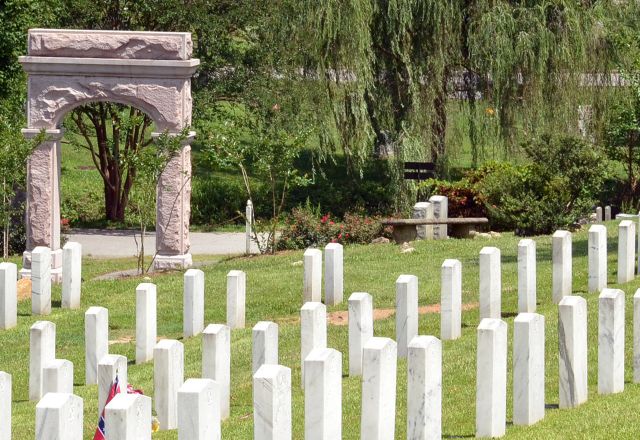Raleigh, N.C., & the Civil War
From 1861-1865, Raleigh, N.C., witnessed firsthand the tragedy of the American Civil War. The North Carolina State Capitol building was the site of the May 20, 1861, Secession Convention, which resulted in N.C. breaking from the Union. As the state's capital, Raleigh served as the center of Confederate power and home to N.C.’s succession of wartime governors: John Ellis, Henry Clark and Zebulon Vance. Other Confederate notables had direct ties to the city as well. General Robert E. Lee's daughter, Mildred, was a student at St. Mary's School, as was Lucia Polk, daughter of Lieutenant-General Leonidas Polk.
Supplies and Training
Raleigh also served as a center for supplies and organization, and thousands of Confederate troops trained at Camp Mangum, the area now occupied by the North Carolina State Fairgrounds, North Carolina State University Faculty Club, School of Veterinary Science and the North Carolina Museum of Art. A ring of fortifications, largely built using slave labor, surrounded the city. Three large Confederate hospitals operated in Raleigh: Pettigrew, near New Bern Ave. and Tarboro Rd., General Hospital No. 7 at the State Fairgrounds and No. 8 at Peace College. A fourth was at Wake Forest.
Sherman’s Arrival
Raleigh largely escaped the devastation of direct action until 1865, as Major General William T. Sherman's Union forces entered N.C. and maneuvered their way towards the capitol while pursuing General Joseph E. Johnston's Confederate Army of Tennessee. Skirmishes took place in and around Raleigh near Morrisville and Garner. On April 12, Governor Vance sent a commission, including former governors David Swain and William A. Graham to meet with Sherman to offer the surrender of the city. The official surrender took place the next day, with the promise that the town would be spared the destruction dealt to Columbia, S.C.
The Final Surrender
On April 26, 1865, Sherman received the unconditional surrender of Johnston's army at Bennett family farm in present-day Durham. The next day the announcement was made public in Raleigh. Union officer George Round climbed to the top of the State Capitol dome and fired signal rockets in celebration, using them, in signal code, to spell out "Peace on earth, good will towards men." Raleigh newspapers reported that for some days "rockets were still going off, bands still playing and the soldiers were yet rejoicing at the thought of peace."
-Josh Howard, Research Historian, N.C. Archives and History

